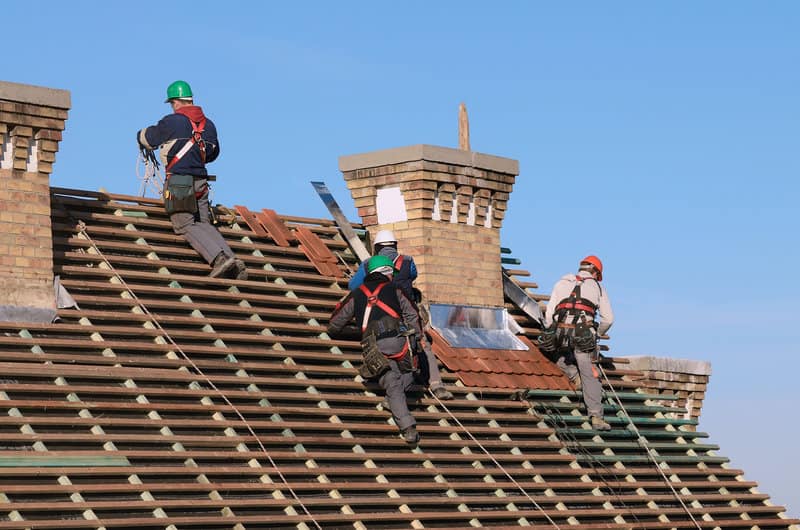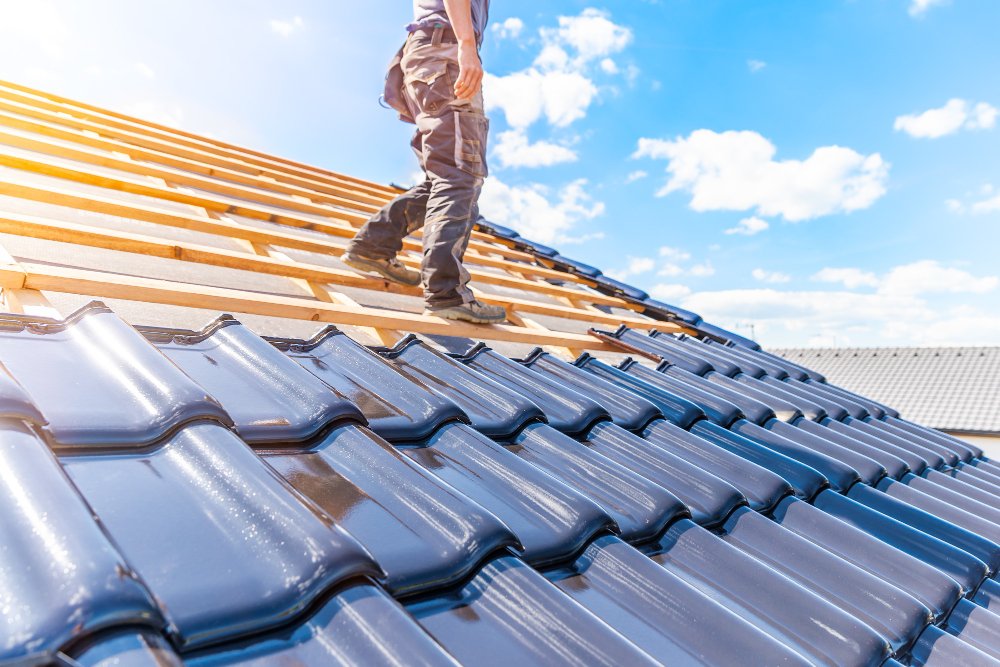Find a skilled Roofer to handle all your residential roofing needs.
Exactly How to Assess Various Roofing Options for Your Building Needs
Examining roofing options for your structure needs a detailed method that thinks about various factors such as the planned usage of the framework, local environment conditions, and material features - Toledo Roofer. It is necessary to consider the benefits and downsides of various roofing types, from asphalt shingles to steel and clay floor tiles, while also factoring in initial prices and long-lasting upkeep.
Examining Your Building's Demands
To efficiently review roof alternatives, begin by completely assessing your structure's requirements. Begin by considering the building's planned usage, as various structures might necessitate differing roofing specs. Household roofs commonly focus on aesthetics and insulation, while industrial structures might concentrate on durability and load-bearing capability.
Next, assess the local climate problems that will affect roof efficiency. Aspects such as temperature level fluctuations, rainfall degrees, and wind patterns can affect product option and style. A roof system that excels in a temperate environment may not carry out as well in locations vulnerable to heavy snowfall or extreme warmth.
Furthermore, evaluate the structural honesty of your building. Ensure that the existing structure can support the chosen roof covering materials, specifically if thinking about heavier alternatives. It is also crucial to review any type of local structure codes or policies that might dictate details demands for roof.

Contrasting Roof Materials
When a detailed analysis of your structure's demands has actually been finished, the following step includes comparing numerous roof products. Each material uses distinctive advantages and disadvantages, making it vital to straighten your option with your particular requirements and situations.
Asphalt shingles are widely recognized for their price and simplicity of installment, making them a prominent option for household structures. On the various other hand, metal roofing, recognized for its longevity and long life, can stand up to severe weather problems however may come with a greater preliminary financial investment.
Clay and concrete floor tiles offer outstanding thermal insulation and aesthetic appeal, specifically for Mediterranean-style design, yet they require an even more robust architectural support due to their weight. Timber shakes deal a natural look and good insulation residential or commercial properties yet might demand a lot more maintenance and are prone to fire risks.
Reviewing Expense and Budget
Analyzing your roof covering options demands a careful analysis of cost and budget considerations. The general spending plan for a roof task comprises a number of factors, including product prices, labor expenditures, maintenance, and possible long-term cost savings. It is necessary to develop a clear spending plan before checking out details roofing you can look here materials, as this will certainly lead the decision-making process and assist you stay clear of overspending.
Begin by obtaining quotes from multiple specialists to recognize labor prices in your region. Guarantee that these quotes consist of all essential solutions, such as elimination of the old roof, installation, and any extra functions, like insulation or air flow renovations - Toledo Roofer. Next off, assess the price of numerous roof covering products, taking right into account both first installment prices and anticipated life expectancy

Understanding Energy Effectiveness
Power performance plays an essential function in the choice of roof covering products and systems, significantly impacting both energy consumption and general comfort within a building. A well-chosen roofing can improve thermal efficiency, minimizing the demand for home heating and cooling down systems, which subsequently reduces energy bills and reduces environmental effect.
When reviewing roofing choices, think about materials that reflect rather than absorb heat. Light-colored or reflective roofing products can substantially lower roof surface temperatures, leading to reduced power usage throughout hot months. Additionally, proper insulation and air flow are essential to optimize the power performance of the entire roof. Insulation prevents warmth transfer, while air flow alleviates heat buildup in the attic room area.
An additional vital variable is the roofing system's long life and maintenance demands. Durable products that need less frequent replacement contribute to long-term energy cost savings. Furthermore, the energy efficiency of a roofing system can additionally be examined with its conformity with recognized sustainability ratings such as power STAR or LEED.
Taking Into Consideration Aesthetic Allure
A roof covering's aesthetic charm dramatically influences the total look of a structure, enhancing its architectural design and improving visual allure. Sylvania Roofing Contractor. When reviewing roof options, it is essential to consider exactly how the selected material, color, and design will balance with the existing structure and neighborhood. A well-designed roof covering can elevate also the easiest of structures, transforming them into visual prime focus
Various roofing materials offer various aesthetic qualities. Standard roof shingles might evoke a classic appeal, while steel roofing can present a contemporary, smooth look. Furthermore, the shade of the roof material plays a crucial duty; lighter tones can make a building official source show up more sizable, while darker tones may produce a cozier setting.
Moreover, architectural elements, such as dormers and eaves, can improve the roofing's aesthetic effect. It is a good idea to speak with expert developers or engineers to ensure the selected roof covering choice lines up with the total layout intent. Eventually, a roofing must not just provide useful advantages yet additionally add favorably to the structure's visual, showing the owner's preference and the personality of the surrounding atmosphere.
Conclusion
